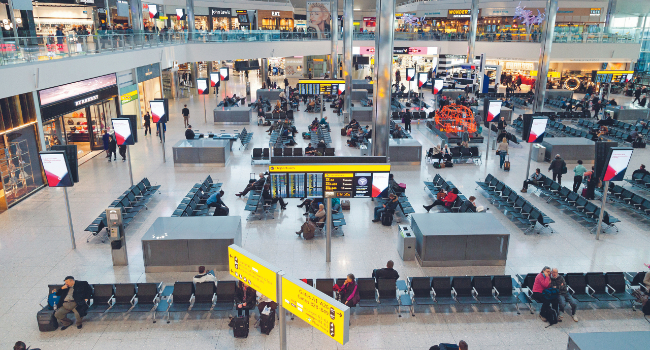
London Heathrow Transforms Airport Operations with Genetec
Genetec, a technology provider of unified security, public safety, operations, and business intelligence solutions, today announced that Heathrow Airport’s multi-year investment in Genetec solutions is enabling them to continuously innovate and transform operations. The joint effort provides Heathrow with a unified view across large-scale airport operations to secure people and assets, bringing efficiency and enhancing the passenger experience while ensuring data privacy and cybersecurity compliance.
London Heathrow is Europe’s busiest airport, handling approximately 80 million passengers and 14 million tons of goods annually. Over 76,000 employees work around the clock to ensure the airport’s smooth operations across its 1,227-hectare site, including maintaining passenger flow, securing the premises, and managing over 1,300 daily take-offs and landings for 89 different airlines.
Heathrow initially deployed Genetec Security Center to bring all of its IP security systems onto one unified platform. What began as a 2,000-camera deployment in 2016 has since more than quadrupled in size, incorporating everything from video and access control to LIDAR, analytics, automatic license plate recognition (ALPR), and more. Today, Genetec solutions are used to go far beyond security. For example, Genetec solutions are used to monitor over 150 km (93 miles) of baggage belts and facilitate the daily entry and exit of over 150,000 vehicles.
“We’re essentially running a small city operation that happens to be called Heathrow,” explains Danny Long, IT Product Owner for physical security products at Heathrow. “Alongside the traditional airport security functions, we’re responsible for the monitoring of roads, retail space, three train stations, a bus terminal, offices, a church, fuel stores, a high voltage electrical network, and all the other associated infrastructure that maintains passenger flow.”
Genetec Security Center now supports 90 different stakeholder groups working across 110 distinct control rooms, all of whom have different needs and access rights. Customized dashboards enable individual teams and third parties, such as police, government agencies, airlines, and retailers, to focus on their specific tasks.
For example, some operational staff are given the tools to monitor passenger flow and are automatically notified when security lines grow too long. Meanwhile, colleagues in IT don’t see camera feeds. Instead, they have access to system health dashboards that notify them of devices that have fallen offline or require software/firmware updates.
“The joy of working with London Heathrow is that the team is constantly striving to put our system through its paces and identify new areas where it can add value,” states Simon Barnes, Director of Business Development, Genetec, Inc. “While our software is configured to their requirements at the time, once in the field, new requirements emerge, and we have to adjust to their reality."
“My job is to translate business requirements into workable solutions and Genetec provides me with the valuable tools to achieve that,” concludes Long. “Our experience with Genetec has been very positive. We’re only looking to expand in terms of the size and usage of the system.”